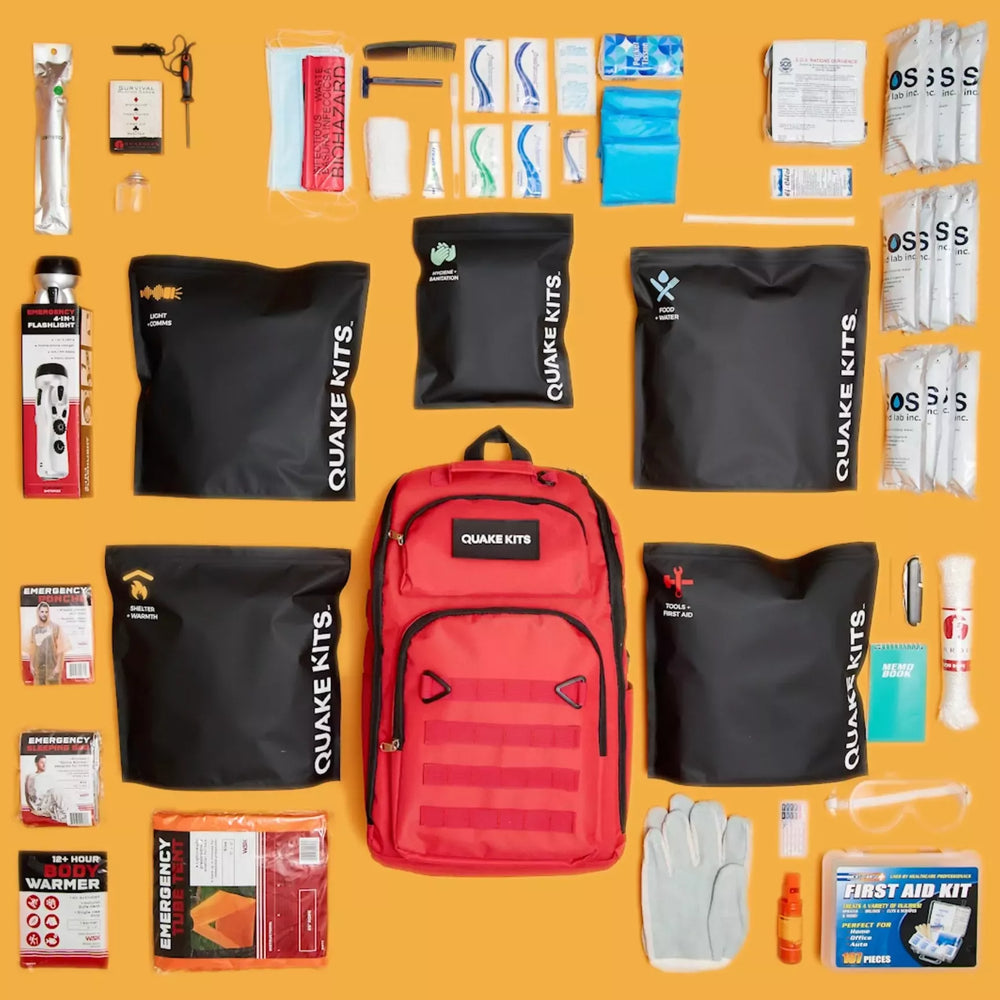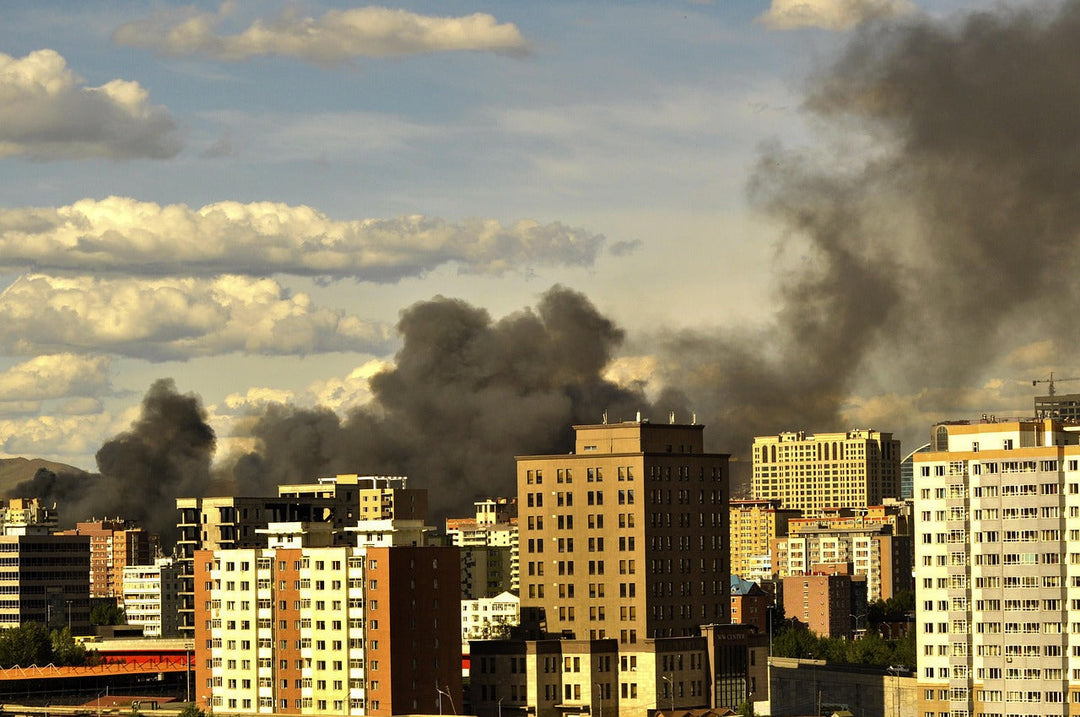El poder impresionante y aterrador de los terremotos
Cuando la Tierra se abre - El terremoto de Myanmar
El 5 de mayo de 2024, la tierra se abrió durante un terremoto de magnitud 7.7 en Myanmar y, por primera vez , un video captó el momento exacto en que una falla se abrió paso en la superficie terrestre . Es un escalofriante recordatorio del inmenso poder que yace bajo nuestros pies y una clara advertencia para quienes viven cerca de grandes fallas como la de San Andrés o la zona de subducción de Cascadia . Comprender lo sucedido en Myanmar puede ayudarnos a prepararnos para lo que podría ocurrir más cerca de casa.

Antes de un terremoto: Conoce el poder que hay debajo de ti.
Comprenda el tipo de falla:
El terremoto de Myanmar se produjo a lo largo de una falla de rumbo llamada falla de Sagaing , donde dos bloques de la corteza terrestre se deslizan horizontalmente uno junto al otro . Más específicamente, se trata de una falla dextral. Falla de desplazamiento lateral , lo que significa que el lado opuesto de la falla se mueve hacia la derecha si uno se encuentra en uno de sus lados .
La falla de Sagaing forma parte de un límite de placa transformante , donde dos placas tectónicas ( en este caso, la placa de Birmania y la placa de Sunda ) se deslizan una junto a la otra. Así, mientras que la falla de rumbo ... describe el movimiento a lo largo de la falla, transforma se refiere al contexto tectónico más amplio .
Este tipo de falla es similar a la tristemente célebre falla de San Andrés en California , que también se encuentra en un límite transformante entre las placas del Pacífico y Norteamericana . Ambas son capaces de producir movimientos bruscos y repentinos , y en el caso del terremoto de Myanmar , esos movimientos fueron captados por las cámaras , mostrando el desgarro literal de la superficie terrestre en tiempo real .
La energía involucrada:
Para poner las cosas en perspectiva, un terremoto de magnitud 7,7 como el de Myanmar libera aproximadamente 22 petajulios . con una energía equivalente a la de 5 megatones de TNT . Esta fuerza es suficiente para desplazar enormes bloques de roca varios metros en cuestión de segundos. Terremotos de mayor magnitud , como los que se esperan en la Zona de Subducción de Cascadia, también podrían generar terremotos de mayor magnitud . Frente a la costa del Pacífico Noroeste, podría liberar energía a una escala de 90 a 1900 veces mayor , causando daños catastróficos en regiones enteras y generando tsunamis de más de 30 metros de altura.

Monitoreo de la actividad sísmica :
Las herramientas y aplicaciones de monitoreo sísmico pueden alertarte sobre pequeños temblores que suelen preceder a terremotos mayores . Mantenerse informado es el primer paso para estar preparado. Si vives cerca de una falla importante , como en California, Oregón o Washington, es fundamental estar al tanto de estas alertas .
Durante un terremoto: Manténgase conectado a tierra y protegido.
Agáchate, cúbrete y sujétate :
En cuanto empiece a temblar , lo primero que debes hacer es protegerte de la caída de escombros. Tírate al suelo , cúbrete debajo de una mesa o escritorio resistente y sujétate hasta que deje de temblar. Aléjate de las ventanas y de los muebles pesados que puedan volcarse.
Prepárense para las réplicas:
Incluso después de que termine el terremoto principal , las réplicas pueden continuar durante días o semanas. Tómese cada una en serio; las estructuras ya debilitadas por el terremoto inicial podrían colapsar con las réplicas posteriores .
Evite las zonas de falla :
Como se observa en el video de Myanmar , las rupturas de fallas pueden crear peligrosos desplazamientos del terreno y fisuras. Evite las zonas abiertas donde la tierra pueda partirse y manténgase alejado de puentes, pasos elevados y laderas inestables .
Después de un terremoto: Recuperación segura
Inspeccionar y documentar los daños:
Antes de volver a entrar en su casa o edificio , revise si hay daños estructurales . Las fugas de gas , los incendios eléctricos y las roturas de tuberías de agua son peligros comunes . Tome fotos para las reclamaciones al seguro y contacte con los servicios de emergencia si es necesario.
Reconecta con tus seres queridos :
Los sistemas de comunicación podrían estar caídos. Utilice puntos de encuentro preestablecidos y lleve una radio o comunicador satelital a pilas en su kit de emergencia .
Manténgase informado:
Manténgase al tanto de las actualizaciones de agencias geológicas como el USGS o su oficina local de gestión de emergencias . Estas fuentes proporcionarán información precisa sobre réplicas, cierres de carreteras y labores de recuperación .
Manténgase preparado para futuros terremotos
Abastece tu kit de emergencia :
Incluye artículos esenciales como agua, comida, una linterna, pilas, un silbato, un botiquín de primeros auxilios, calzado resistente , una radio y copias de documentos importantes . Tener provisiones para una semana es una buena base, sobre todo si vives cerca de fallas geológicas importantes .
Proteja su hogar:
Asegure los estantes, fije los calentadores de agua y ancle los muebles pesados a las paredes. Las correas y los cierres antisísmicos pueden ayudar a prevenir lesiones y daños.
Conozca sus riesgos:
La falla de San Andrés y la zona de subducción de Cascadia están próximas a sufrir grandes sismos . La falla de San Andrés, en particular, es capaz de producir terremotos de magnitud 7 a 8 , mientras que una ruptura total de la zona de Cascadia podría provocar un megaterremoto de magnitud 9,0 y el consiguiente tsunami.
El terremoto de Myanmar nos muestra sin filtros la brutalidad y el poder destructivo de la energía sísmica . Para quienes vivimos en zonas sísmicas , esto no es solo un vídeo viral , sino una llamada a la acción.
Prepárense . Manténganse a salvo.
Echa un vistazo a nuestra línea de Kits de preparación para terremotos , almacenamiento de alimentos a largo plazo y equipo de emergencia para que no te tome desprevenido cuando la tierra empiece a temblar. Visita Ready.gov o la Cruz Roja para obtener más consejos de preparación.






Dejar un comentario